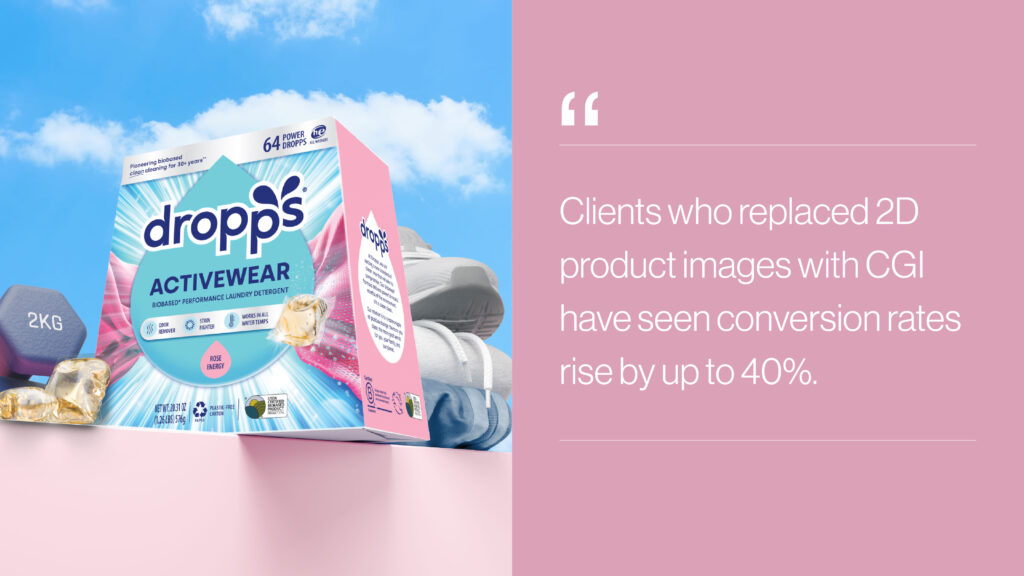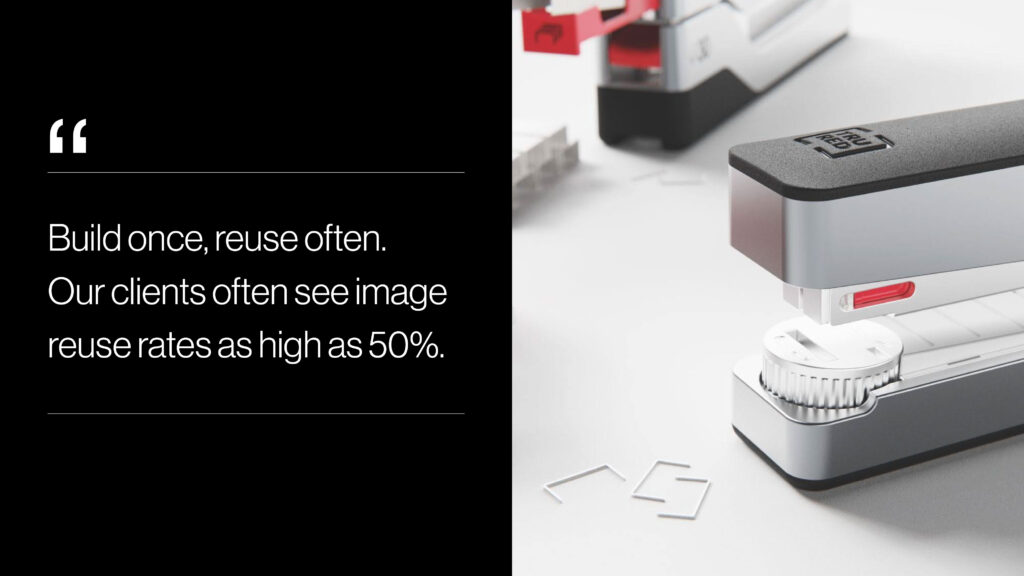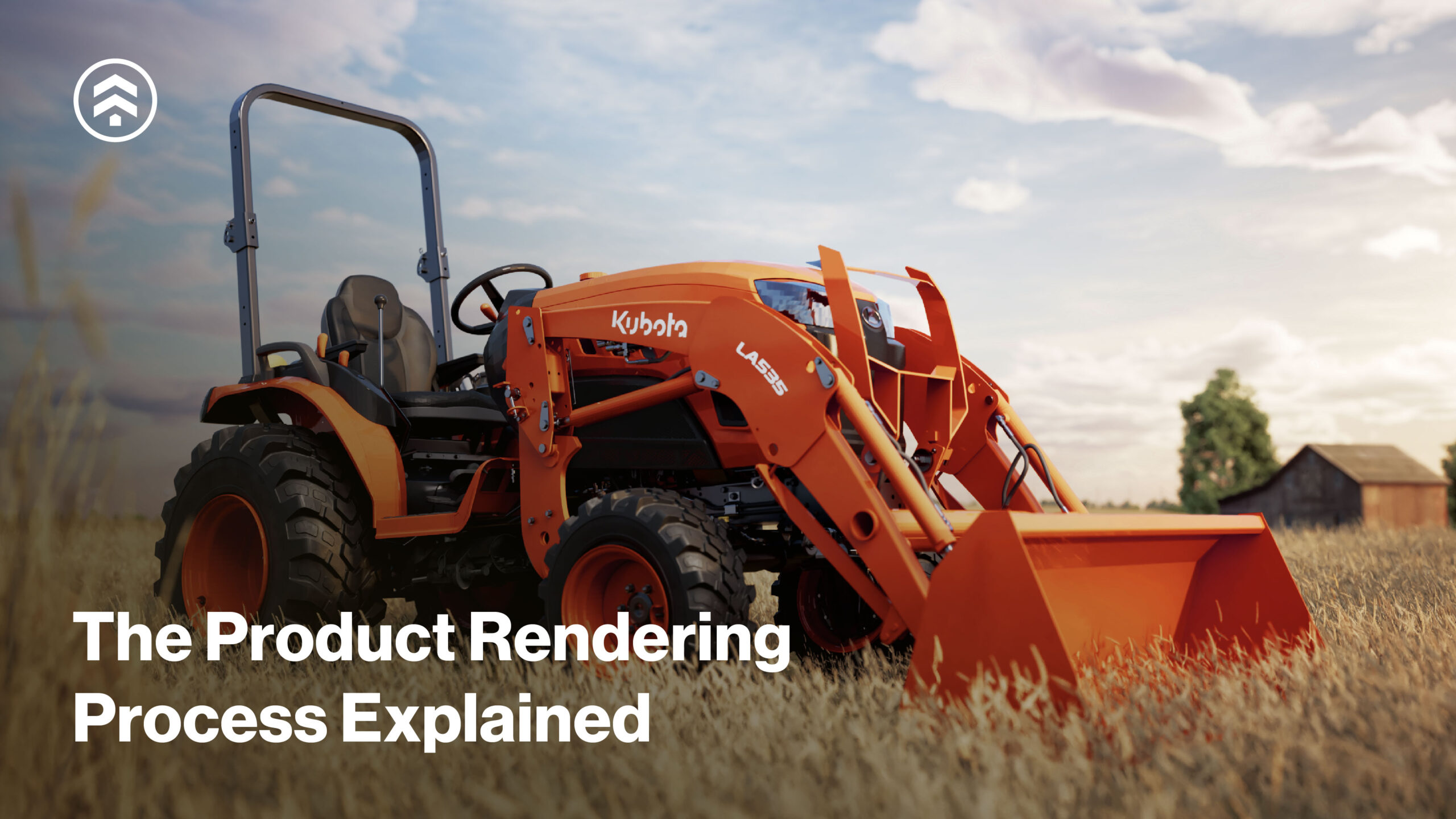Sprout has worked on the forefront of CGI for over a decade. Our designers are skilled in a variety of CAD and rendering software, delivering dynamic 3D product renderings that bring ideas to life. As our core business is the industrial design of consumer products, we specialize in photorealistic representations that blend impeccable detail with visual fidelity. Recognizing the power of a captivating hero image, we craft visual assets that surpass industry standards and stand out in today’s competitive landscape.
We offer a wide array of services, from 3D CAD creation to high-resolution, photorealistic renderings and animations. Whether it’s an image for Amazon’s marketplace or an animation for a keynote presentation, we help clients visualize what’s needed to get the job done. And the results speak for themselves—clients who replace 2D product images with CGI have seen conversion rates rise by up to 40%. These aren’t just pretty pictures—they’re performance-driven assets.
In this blog, we’ll walk through our product rendering process, outlining each step from initial planning to final implementation.

1. Project Planning
The foundation of a successful rendering project begins with a clear understanding of objectives, scope, and timeline. In this phase, we collaborate closely with our clients to discuss key details such as the target audience, messaging, and desired outcomes. This alignment ensures that every rendering supports the broader brand strategy.
We create custom workflows to maximize the benefits of CGI for each client. These tailored workflows ensure seamless integration, optimized efficiency, and help deliver the highest quality visual assets, perfectly aligned with your brand’s needs and objectives.
Each client is assigned a dedicated account manager to serve as a direct point of contact, ensuring smooth communication and a streamlined process throughout the project.
2. Initial File / Sample Transfer
Clients provide us with available 3D CAD files or physical product samples, which serve as references for the rendering project. These materials help us gain a thorough understanding of the product’s design and intended visual appearance.
3. CAD Evaluation or CAD Modeling
Before moving forward, we evaluate all available CAD files for consistency and accuracy. If needed, we perform repairs to ensure alignment with physical references. In cases where CAD files are unavailable, our visualization experts can create 3D models from sketches, photos, or other reference materials.
4. First-In-Series (FIS) Renderings
To establish a strong visual foundation, we create a first-in-series (FIS) rendering that defines materials, lighting, and camera angles. These prototype renderings ensure alignment with the client’s desired visual brand language (VBL) before scaling the process across an entire product line.
5. Revisions & Refinements
Client feedback is crucial in refining the rendering details. We adjust materials, finishes, and lighting to perfect the look. With a well-defined brand strategy, we typically find that two to three revisions are sufficient to reach the ideal final result.
6. Final Renderings
Once all refinements are approved, we apply the established treatment and style to all products within the project. This consistency ensures a cohesive visual presentation across marketing and sales materials.
7. Post-Production
After final renderings are approved, we conduct post-production work to enhance their overall impact. This includes color correction, image retouching, and the addition of any final visual elements that elevate the quality of the final assets.
8. File Transfer
Once completed, we ensure a smooth and secure transfer of the final rendering files to the client. The files are properly compressed and optimized for convenience and efficient use in various applications.
9. Style Guide Hand-Off
At the end of the project, we provide a style guide to the client, which outlines the specific treatment, materials, finishes, and lighting used in the rendering project. This style guide serves as a reference for future projects and ensures consistency across different visual assets. We also offer training and ongoing support to help clients maximize the use of the digital assets we have created to address any technical challenges that may arise. Our goal is to provide a seamless transition and support your team in utilizing the rendered visual assets effectively.
10. Implementation
At the culmination of the rendering process, we support the transition from concept to dynamic implementation, seamlessly infusing these visual assets into your digital ecosystem, marketing materials, and other internal channels. Your catalog of digital assets acts as a strategic resource, promoting brand consistency, efficiency, and collaboration across departments. This approach not only enhances the customer experience but also optimizes internal processes, ultimately maximizing the return on investment for the organization.
Build once, reuse often. Our clients often see image reuse rates as high as 50%, allowing them to maximize the impact of each rendering across e-commerce, packaging, digital marketing, and investor decks.

At Sprout, we understand that high-quality 3D product renderings are more than just images—they are powerful visual assets that elevate your brand, enhance customer experience, and streamline internal processes. From the initial planning phase to the final implementation, our tailored CGI workflows ensure that every asset is perfectly aligned with your brand’s objectives, maximizing the return on your investment.
Whether you’re looking for photorealistic visuals for e-commerce, marketing materials, or investor presentations, our CGI studio is ready to bring your products to life with unparalleled detail and precision. Looking to showcase your brand in 3D? Contact our CGI experts to discuss your next project.


